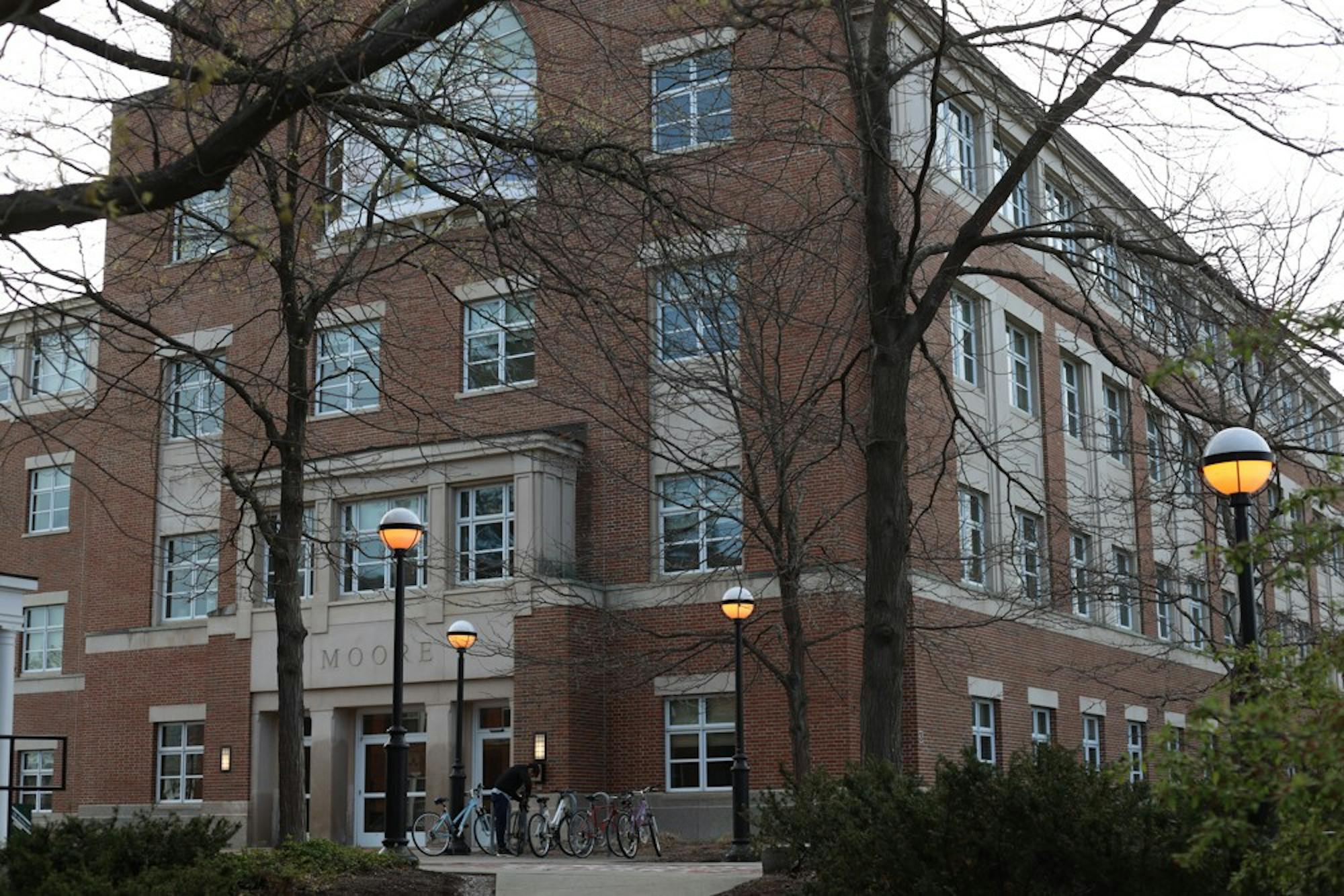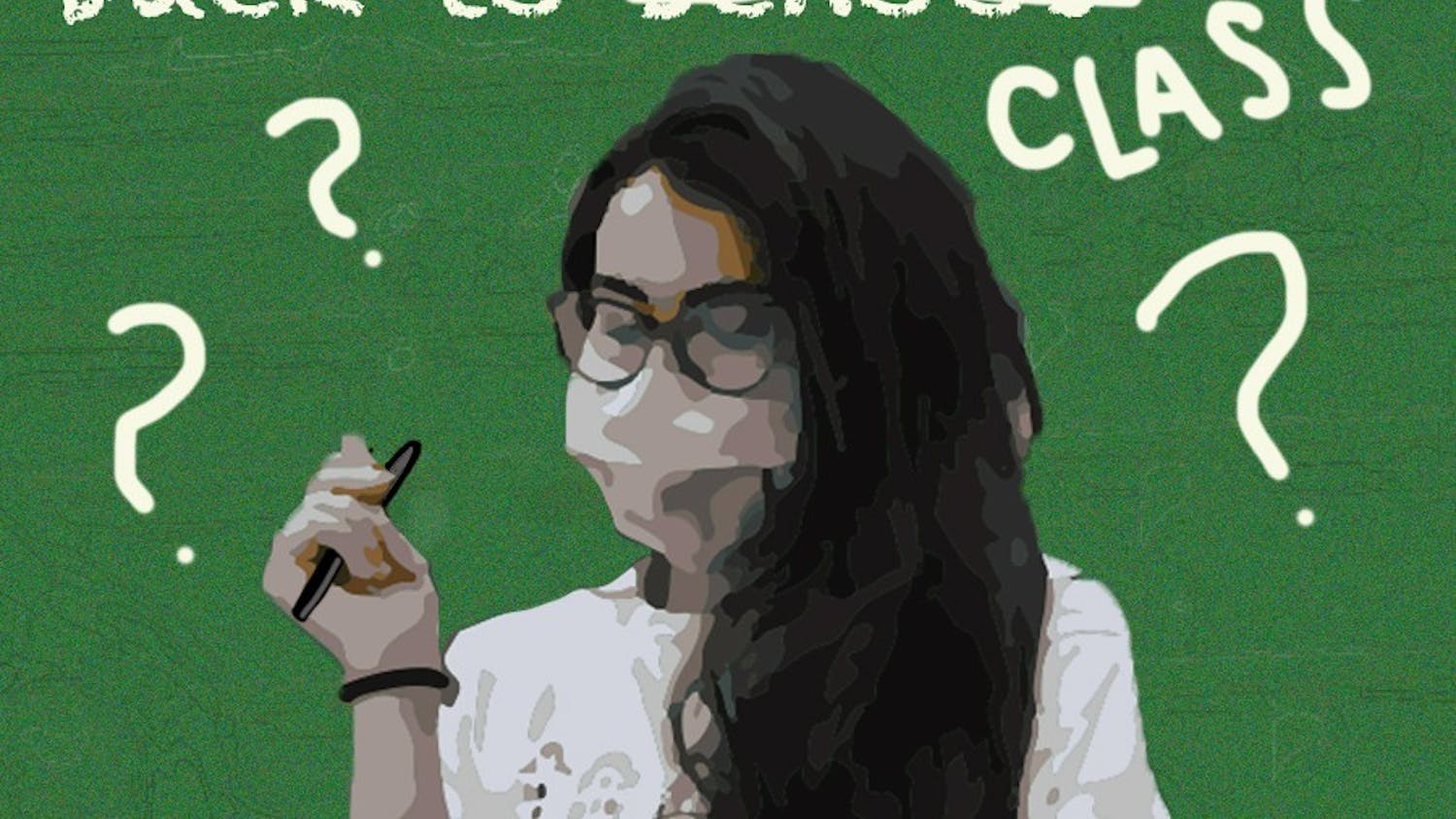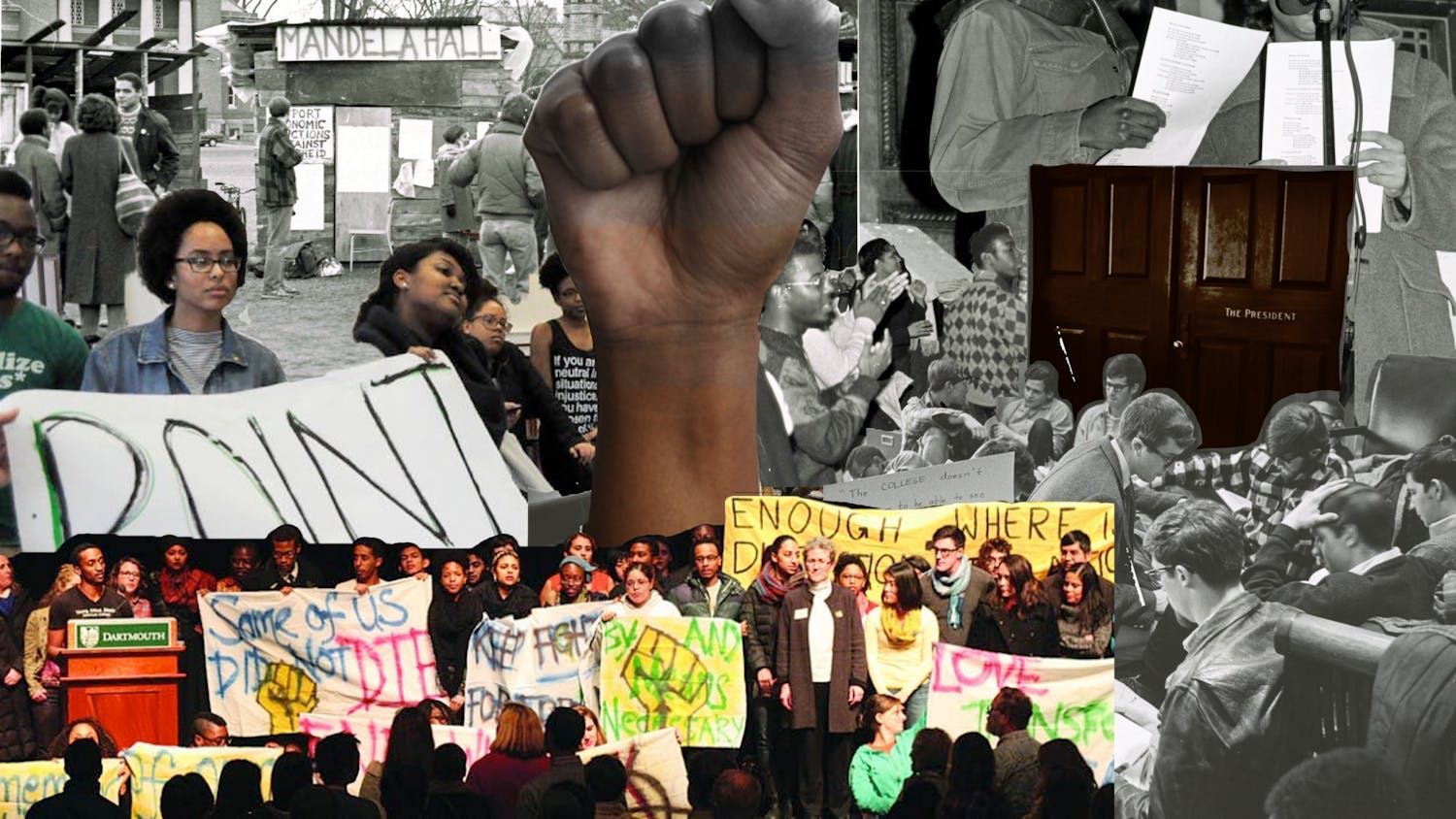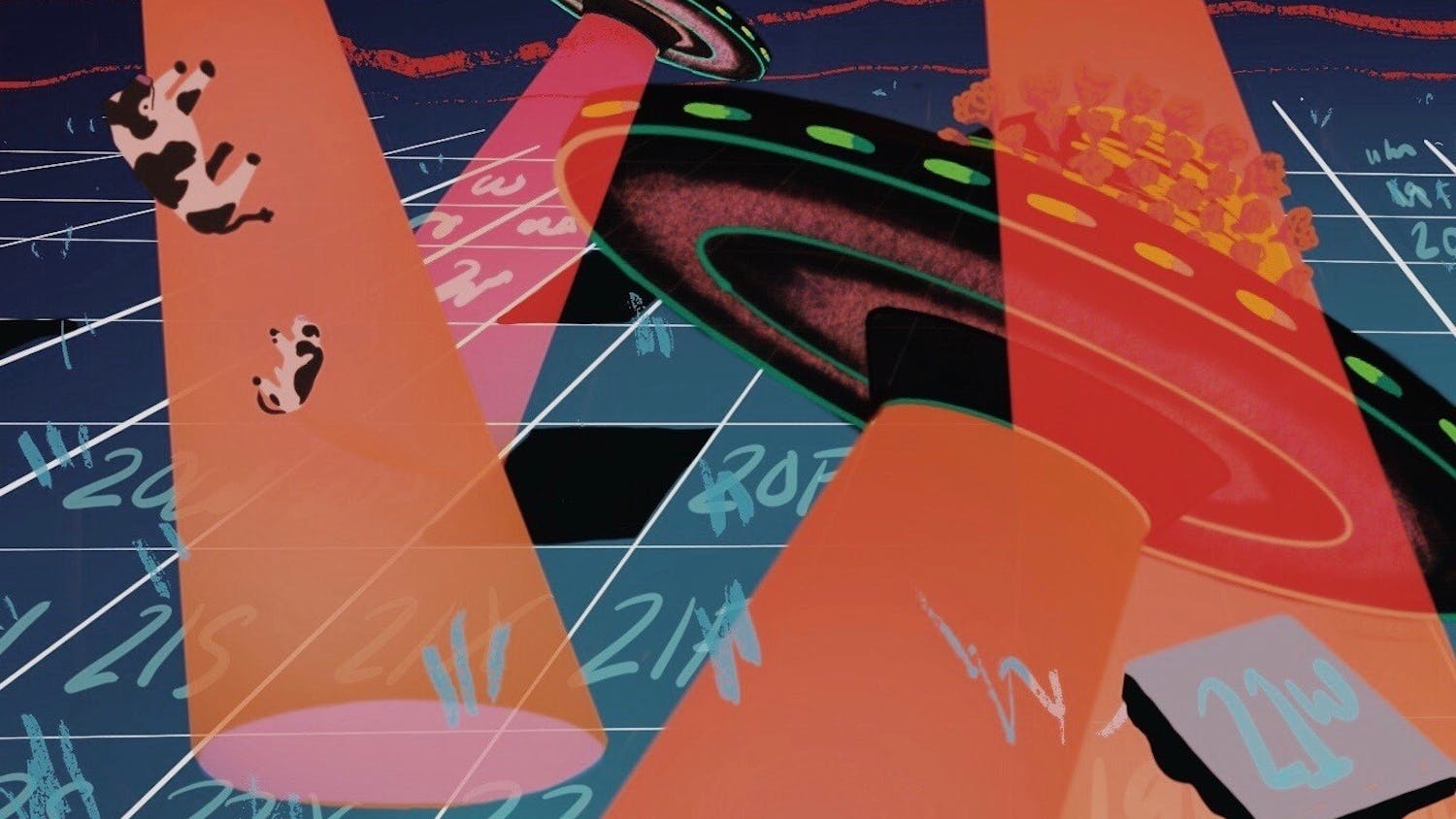We’ve all experienced Zoom fatigue, and many of us are fed up with the limitations of the virtual classroom. But not every class at Dartmouth is sticking to the confines of Zoom. Students in PSYC 38, “Cognitive Neuroscience,” have used virtual reality headsets to experience psychological phenomena firsthand.
Taught by psychological and brain sciences professor Caroline Robertson this term, PSYC 38 covers the neural basis of cognitive functions, beginning with vision and progressing to topics including decision-making, social interactions, neurological conditions and consciousness. Because many concepts covered in the class are best understood through firsthand experience, Robertson used to show interactive illusions and demonstrations in her classroom.
Inspired by her own lab’s use of virtual reality to create immersive environments for test subjects, Robertson looked to VR as a substitute for in-person demonstrations when classes moved online.
With the help of digital humanities informatics specialist John Bell and assistant director of educational technologies Barbara Knauff from Dartmouth Information, Technology and Consulting, Robertson secured grants to fund the project. Robertson’s lab manager Tommy Botch and teaching assistant AJ Haskins both helped prepare the headsets for classroom use.
Robertson is using a range of different VR demonstrations in her class. She categorizes some of these as “psychophysical experiments,” which simulate a laboratory environment. They mimic true psychology experiments and explore how students respond to certain stimuli. In one experiment, the VR headsets showed students two different images, one in each eye. This allowed students to personally experience the effect of binocular rivalry, a concept discussed in class. Pedro Castro ’21, a student in the class, saw a red picture of Baker Tower in one eye and a green picture of Robertson in the other.
“Because different images were shown in each eye at the same time, my brain randomly flipped between them,” Castro said. “So I’d see Professor Robertson at first in green, and then my experience would go from being green Professor Robertson to red Baker Tower.”
Aidan Stuart ’23, another student in the class, felt that this VR experiment enhanced his learning experience.
“It was really cool just to have some sort of conscious perception of the way that our brain processes images,” Stuart said. “We got to just look and see exactly what’s going on.”
Castro thinks that using the VR headset helped him better understand concepts like binocular rivalry.
“Without ever showing an example of it actually happening to you, I think that it’s really hard to actually understand the concept of it,” Castro said. “This VR experience really gave me that ‘Whoa, this is what it’s like.’”
Robertson classifies other VR demonstrations as “experiences,” rather than experiments. These are first-person simulations that exemplify a concept from class. Robertson has recently been teaching her class about the neural development of babies. In one VR experience, students saw the world from a baby’s point of view, and they could experience firsthand how a baby’s senses develop as it grows.
“[Babies] are born with very impoverished senses,” Robertson explained. “Over the first few weeks of life, they start to develop some of the basic visual mechanisms that they use to see the world, like depth perception and color. But in those first months, the world looks really different. We have this really great first-person experience of what the world looks like to a baby.”
Although Robertson originally intended to use the VR headsets as a temporary substitute for live demonstrations, she now hopes to continue using them when classes return to in-person teaching.
“Things like the first-person experience of a baby’s life are just going to be such a rich contribution to the course that will live past COVID for sure,” Robertson said. “We’ll continue to use VR demos to demonstrate these compelling first-person psychological experiences and use them to motivate a class discussion about the neural mechanisms.”
Some of the students in the course said that VR could have further applications in the classroom. Castro mentioned that VR simulations could augment his learning in other classes he is taking, like physics.
“[The professor normally] shows us videos of the experiments we are supposed to do ... and to a certain point we can understand what's going on, and it’s cool to see,” Castro said. “But I think especially for people who are hands-on learners or more visual learners, being able to see how the electrical field changes when you change voltage — the idea of being able to do that in VR and play around with controls to see how things go, I think that’d be really, really cool.”
Stuart also believes that other departments could benefit from the use of VR.
“I could see a future where if VR headsets are more accessible or cheaper, there could be benefits for a wide range of disciplines, especially with remote learning,” Stuart said. “In chemistry, VR might be a way to do virtual labs or to visualize molecules or different structures. And I’m sure that there are a lot of ways that classes in the art department or music department might benefit from VR.”
Robertson expects to see more classes integrating VR into their curricula over the coming years. She said that Bell and the Data Experiences and Visualizations Studio — which aims to integrate “extended reality” technologies into research and teaching — are hoping to keep a supply of VR headsets available for classes to borrow. However, Robertson doesn’t foresee VR becoming a central part of every class.
“There aren’t that many classes that have three experiments a week,” Robertson said. “It would be cool if everyone was always teaching from a first-person perspective and with VR, but realistically I’m not sure we need to do that every single class in every course.”
Even still, the possibilities for VR in the classroom are exciting. Robertson thinks that for classes like history, where students are learning about specific locations and time periods, VR could allow for a more immersive learning experience.
“Picture: You’re in a history class and you’re reading about the Campidoglio in Rome,” she said. “You benefit a lot from standing in that space and looking around it and feeling those stairs that you walked up to stand in the center of the piazza.”
Arielle Feuerstein ’24 is an English major from Bethesda, Maryland. She currently serves as the production executive editor, and in the past, she wrote and edited for Mirror. In addition to writing, Arielle enjoys crocheting, board games and walks around Occom Pond.




